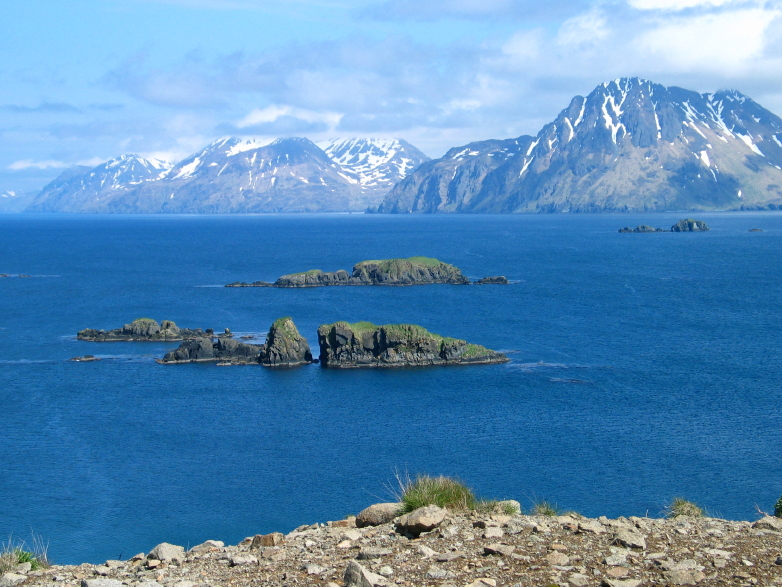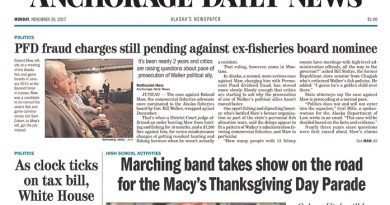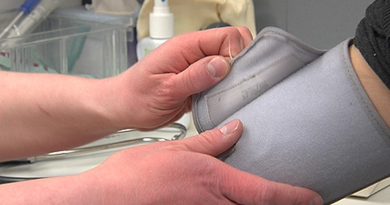Ice retreat threatening Bering Sea pollock

The years 2002 through 2005 were bad for Bering Sea pollock. The biomass plunged during those years.
In a presentation in Washington, D.C., a NOAA fisheries biologist said today ongoing research points to two suspects: ice and fat, in league with each other.
NOAA biologist Ed Farley of the Alaska Fisheries Science Center says the low pollock years were warm, resulting little Bering Sea ice by May. The ice rebounded in 2007-2012, and so did the pollock.
“If we focus on that downward trend, that tended to occur during that early ice retreat period. That drop amounted to a 40 percent drop in available pollock catch, so that was a big issue. No one really understood why the pollock biomass was declining but it was impacting the fishery.”
The importance of fat
Farley told reporters in Washington on Tuesday, that the key Arctic ingredient is fat. And it starts low on the food chain. Farley says when the ice retreats early in the spring, it benefits small zooplankton that are low in fat. The pollock have to eat a lot of them to become fat themselves. But late ice retreat favors big, fatty zooplankton that Farley says make for bigger, fatter pollock.
“If you’re a fish or a marine mammal you’re going to want to store as much fat as possible before winter so you have a better chance to survive,” Farley says.
If further research bears this out, it’s bad news, of course, for the $500 million pollock fishery in the Bering Sea. Not only is the climate warming over the long haul, but we may be in the midst of a short-term warming trend, too. Farley says this is an early ice retreat year that looks a lot like the bad pollock years of 2002 to 2005.
“It’s extremely warm in the sub-Arctic, southeastern Bering Sea. It was warm last year, so we’re seeing back to back years where it’s warm again. And last year we started to see a shift back to smaller zooplankton.”
There’s a lag in the effect on pollock. Last fall NOAA announced trawl survey results showed a big increase in pollock biomass. Farley says it would take at least three successive warm years before he’d expect to see a decline in stock assessments.
Chukchi Sea
Further north, in the Chukchi Sea, Farley says they’re finding a similar effect on two abundant fish in the food chain. Warm water turns out to be bad for Arctic cod but saffron cod thrive in it. Trouble is, the warm-loving cod have far less fat, so Farley says warm water means trouble for marine mammals.
“If you’re an ice seal, you’re going to have to eat 2.7 times more saffron cod to get the same amount of fat as you get out of one Arctic cod.”
By the end of the century, Farley says, the water temperatures are projected to be outside the Arctic cod’s comfort zone.
“It’s going to warm up to be about 10 to 13 degrees Celsius and that is a potential to be too warm for the Arctic cod, so they’re going be moving out of this region, or not make it.”
That would be bad for the ice seals, he says, and for the polar bears that hunt them.
Related stories from around the North:
Canada: Is a fishing boom in the Arctic a sure thing?, Eye on the Arctic
Finland: EU drops seal-protection complaint against Finland, Yle News
Norway: Climate change will lead to ecosystem clash, Barents Observer
Sweden: Record numbers for Swedish wild salmon, Radio Sweden
Russia: Oryong 501 sinking highlights Arctic fishing, shipping issues, Blog by Mia Bennett
United States: Bristol Bay sockeye’s prey quality affected by ocean temperature, Alaska Dispatch



